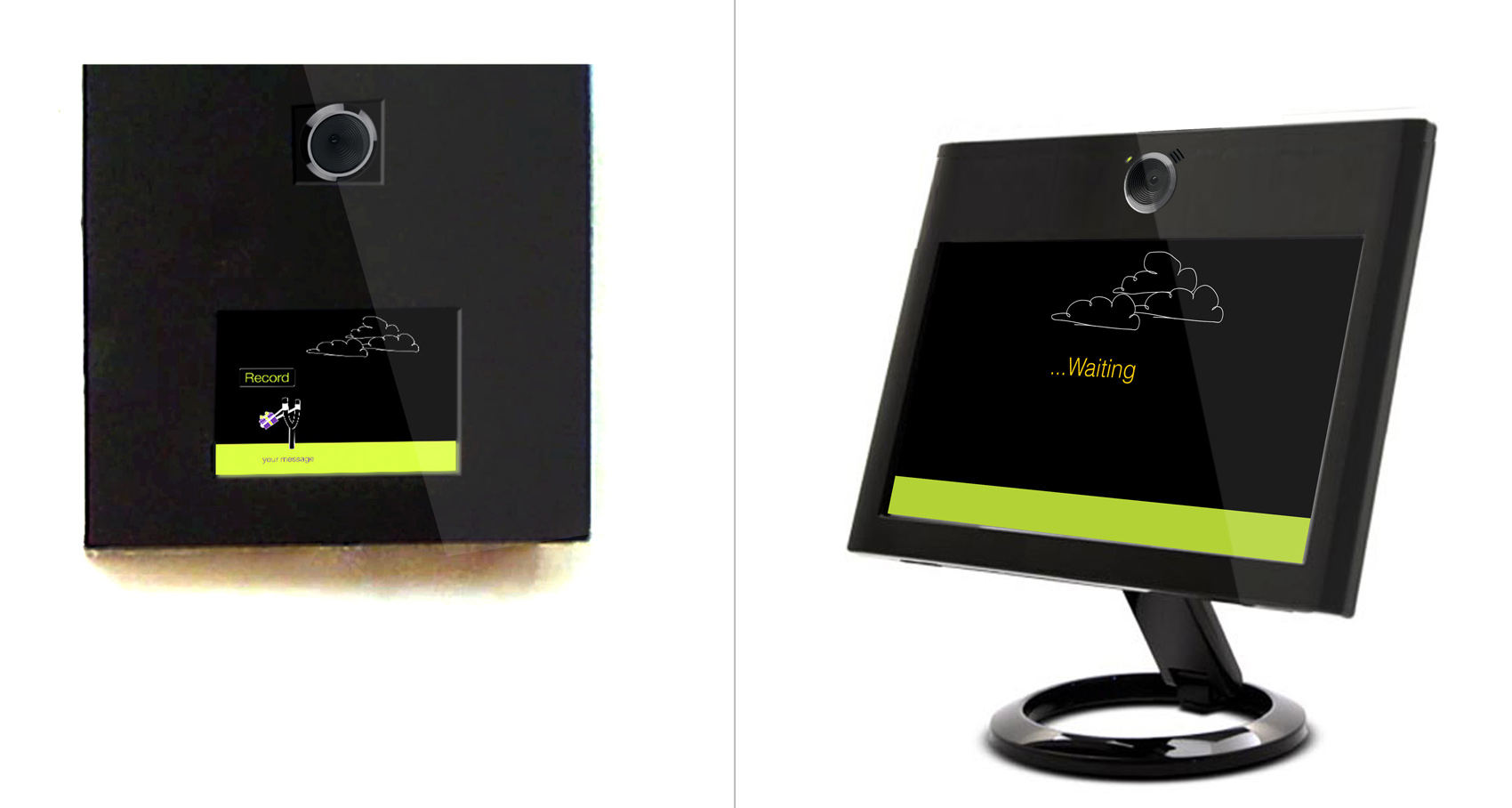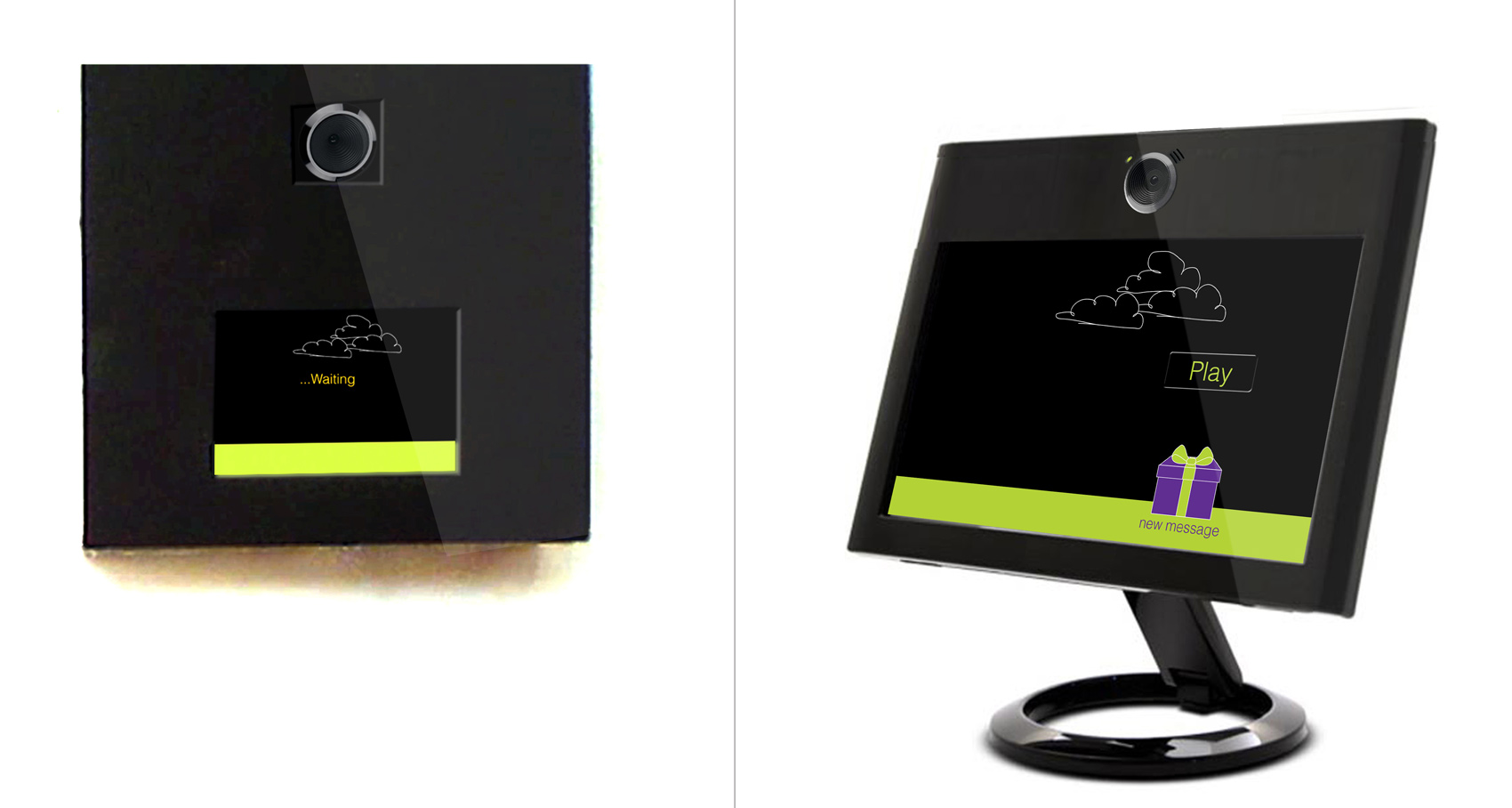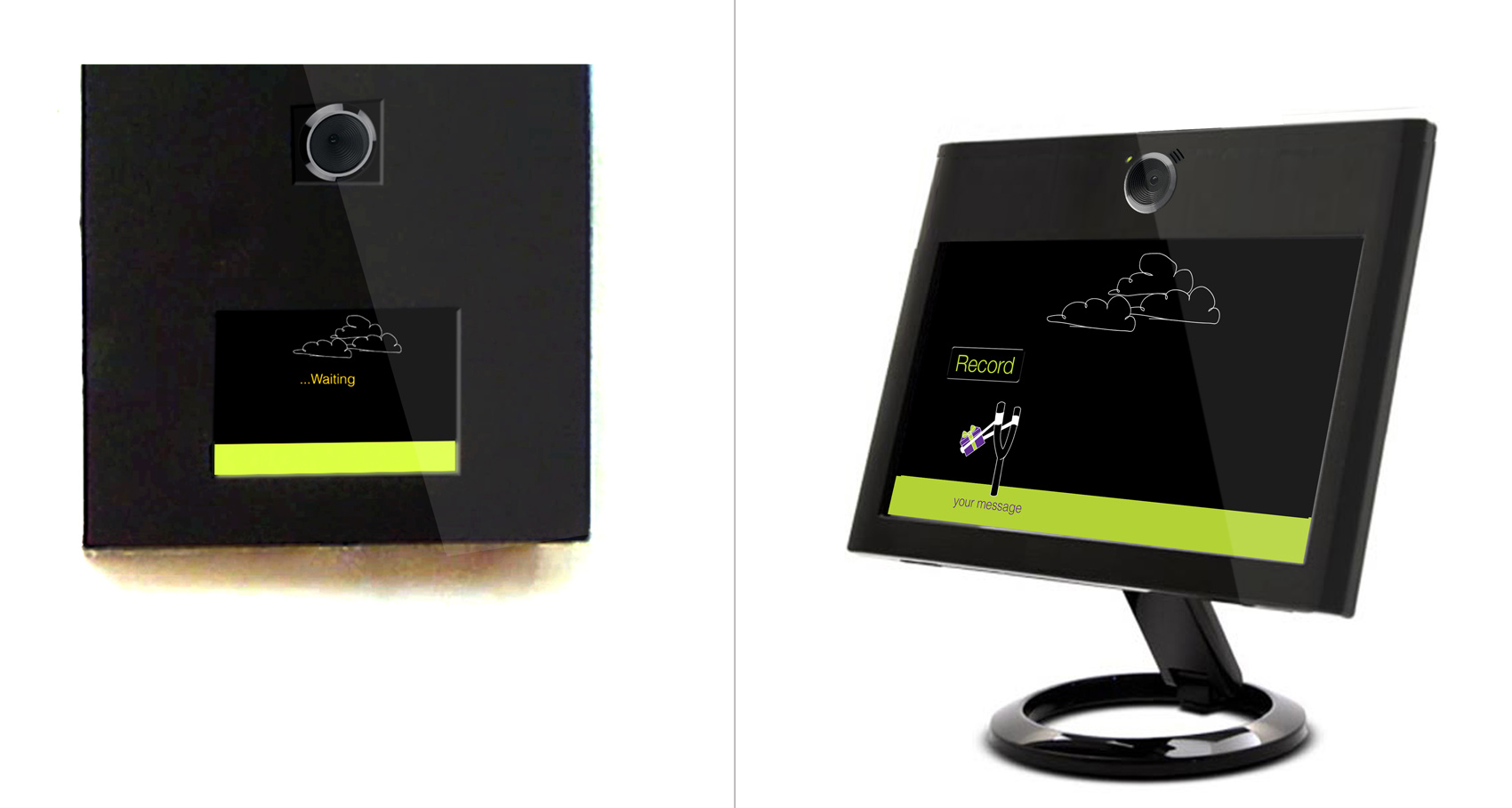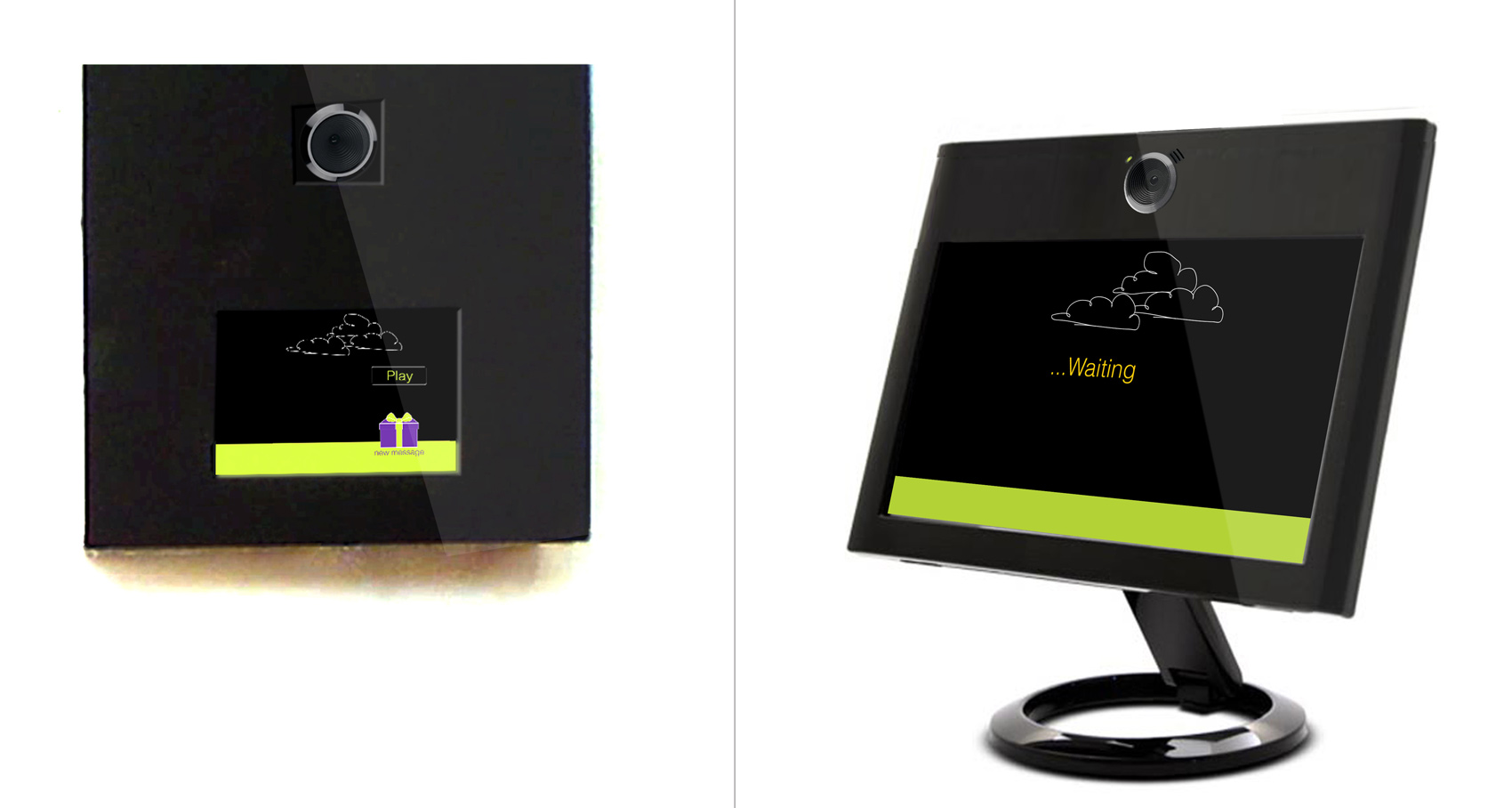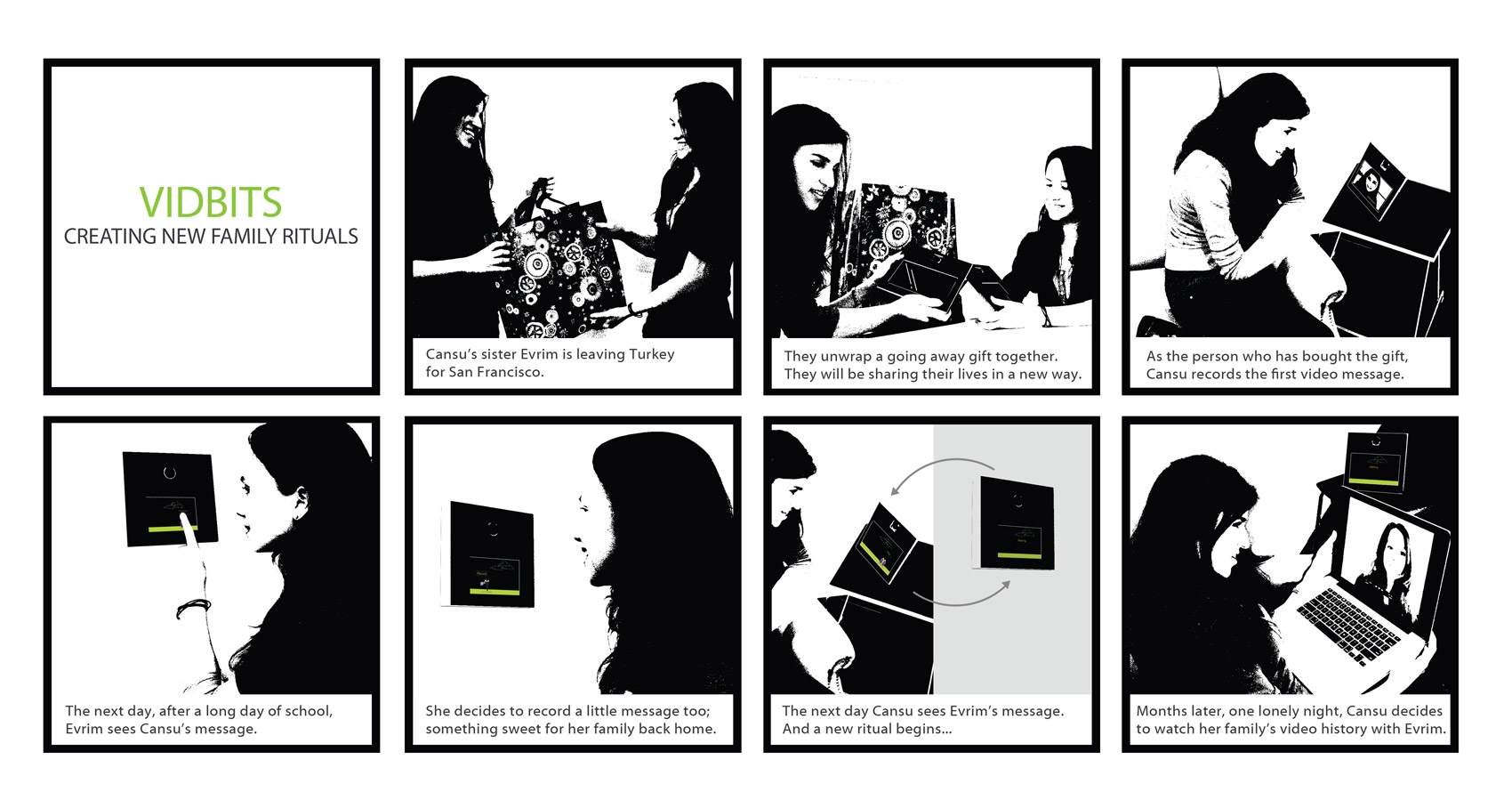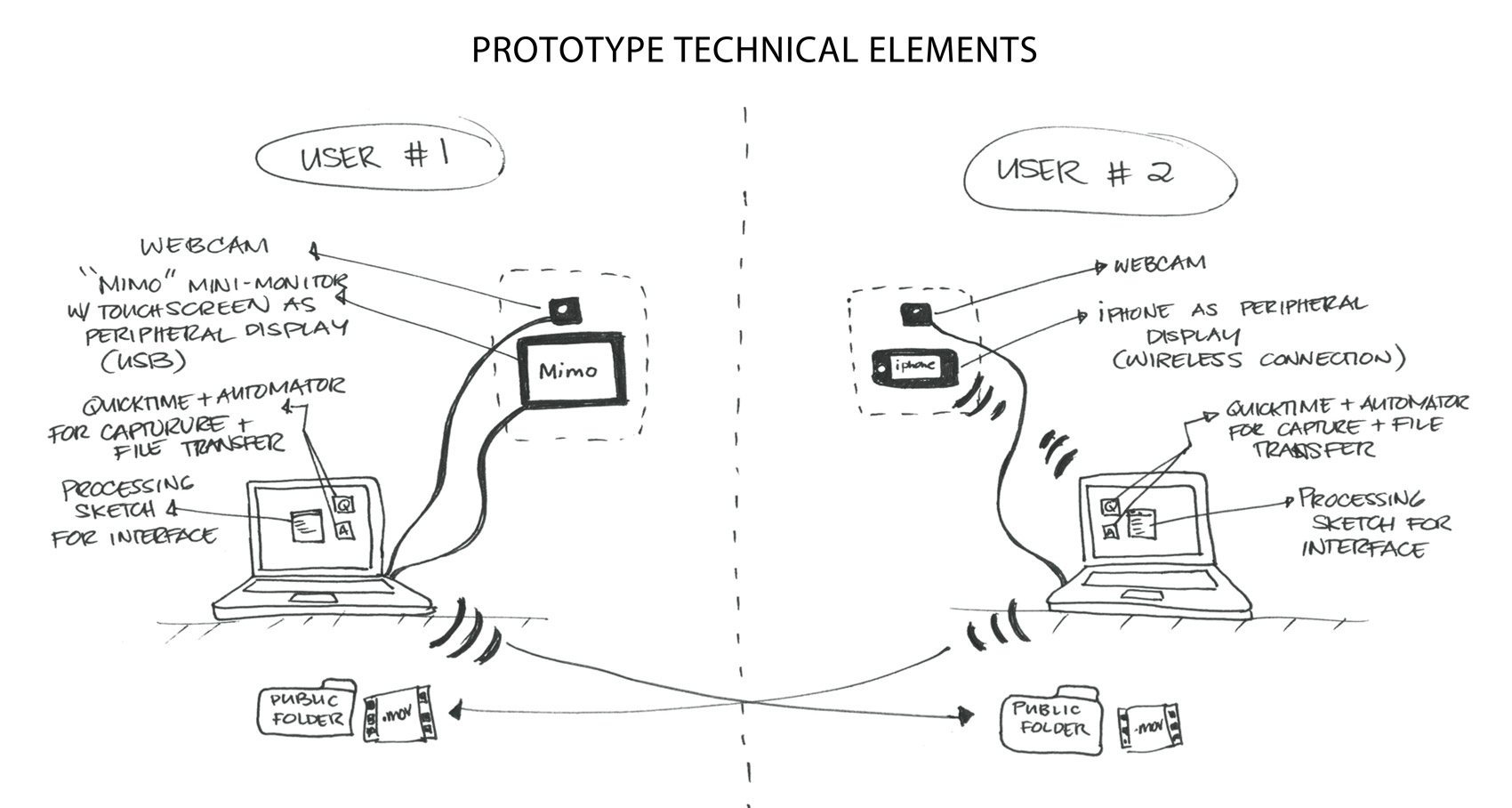To maintain the bonds between geographically dispersed family members, we designed a new communication system that delivers presence and personality like a skype call, but is as fast, easy and flexible as a text message.
The aim of this project was to design an intervention in the context of family rituals. Living in the Bay Area, we noticed the abundance of people who have relocated from all over the world to pursue their dreams, just like us. And, even though we all have different levels of connection with our hometowns, all of us have a need to maintain strong emotional bonds with our loved ones.
The problem is, with our hectic daily lives and the time differences between the cities, scheduling or committing to a long conversation through phone calls and Skype can be demanding, even stressful. Email and text messages can feel impersonal and insufficient. A simpler method of keeping the bond strong between families is missing.
VIDBITS aims to create a new ritual through casual, quick and personal video messaging.
The ritual begins with one family member’s purchase of a set of paired devices, one for the departing member and one for the ones left behind. The initiator uses the device to record the first video message, and sends it to the second user’s device abroad. That user will be prompted to play the short message, and then record a response message. Once the second message is sent, a cycle is complete, and the message ritual continues back and forth. One can’t record and send a message without receiving a response first. And, all the sent videos are compiled in a database that can be accessed through the web.
We created a working prototype using Processing as a programming tool. You can check it out in this video:
When designing VIDBITS, we focused on three key elements: Video length, the interface and the form of the devices.
The recording time for the videos is 15 seconds. This is just enough time to wish someone luck on a test, say you have gotten home from a trip safely, or simply wave and smile. We felt that the short length would highlight the ease of participation in the ritual, and keep the feel of the interaction very separate from a skype call.
The interface is simple and intuitive enough for a grandparent or a 5 year old to use. On either end of the pairing, these devices might be shared by a group of people, or used by one. The intent to connect two households influenced the screen interface’s controls and visual style.
The paired devices are meant to live inside the home, and not be carried around – like a mobile phone or a tablet. We wanted the user to not stress over being connected to it all day and discover a new message when they pass by it. The user should feel free to delay recording a response.
Project Team: Cansu Tecimer & Danielle Cojuangco
